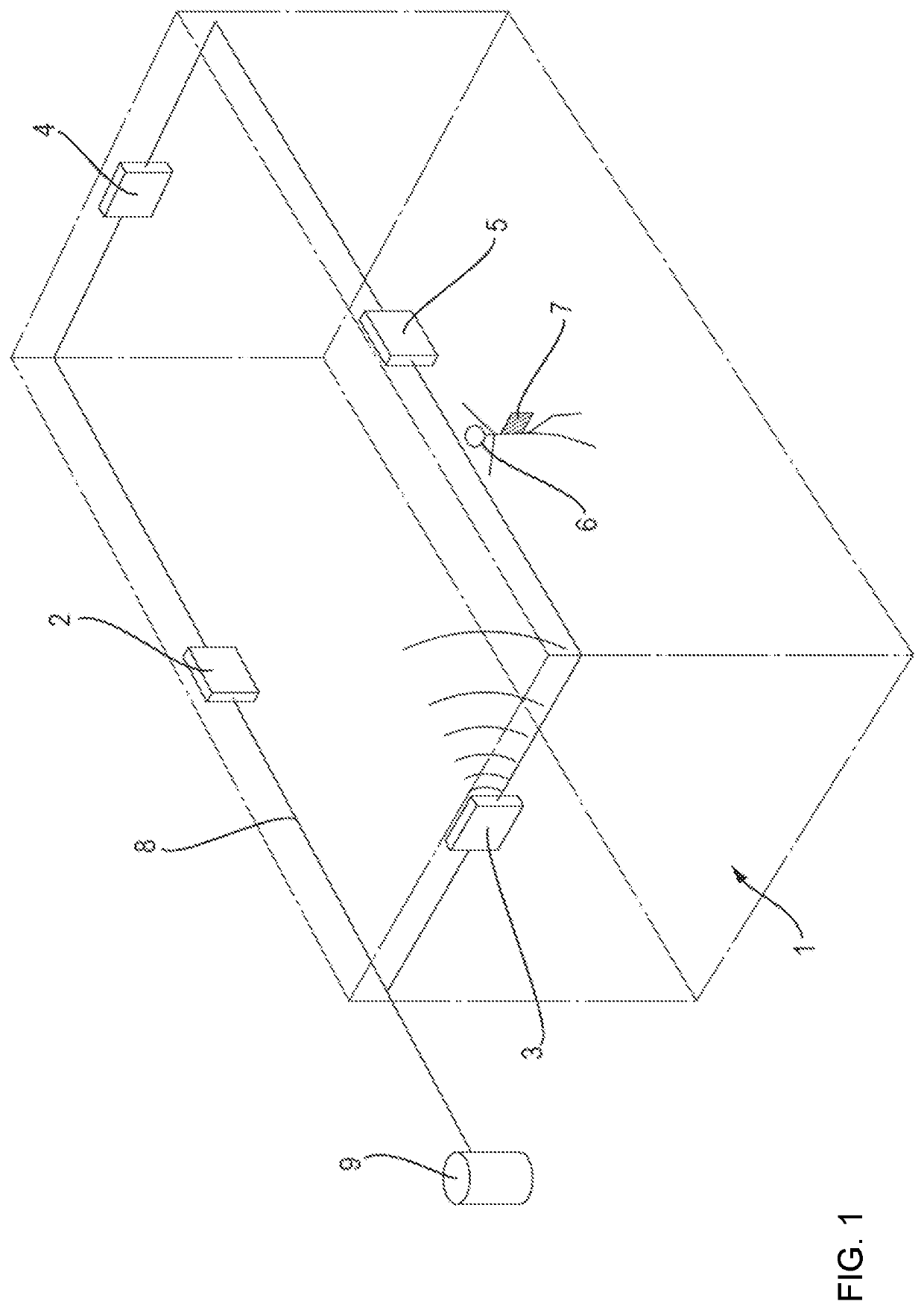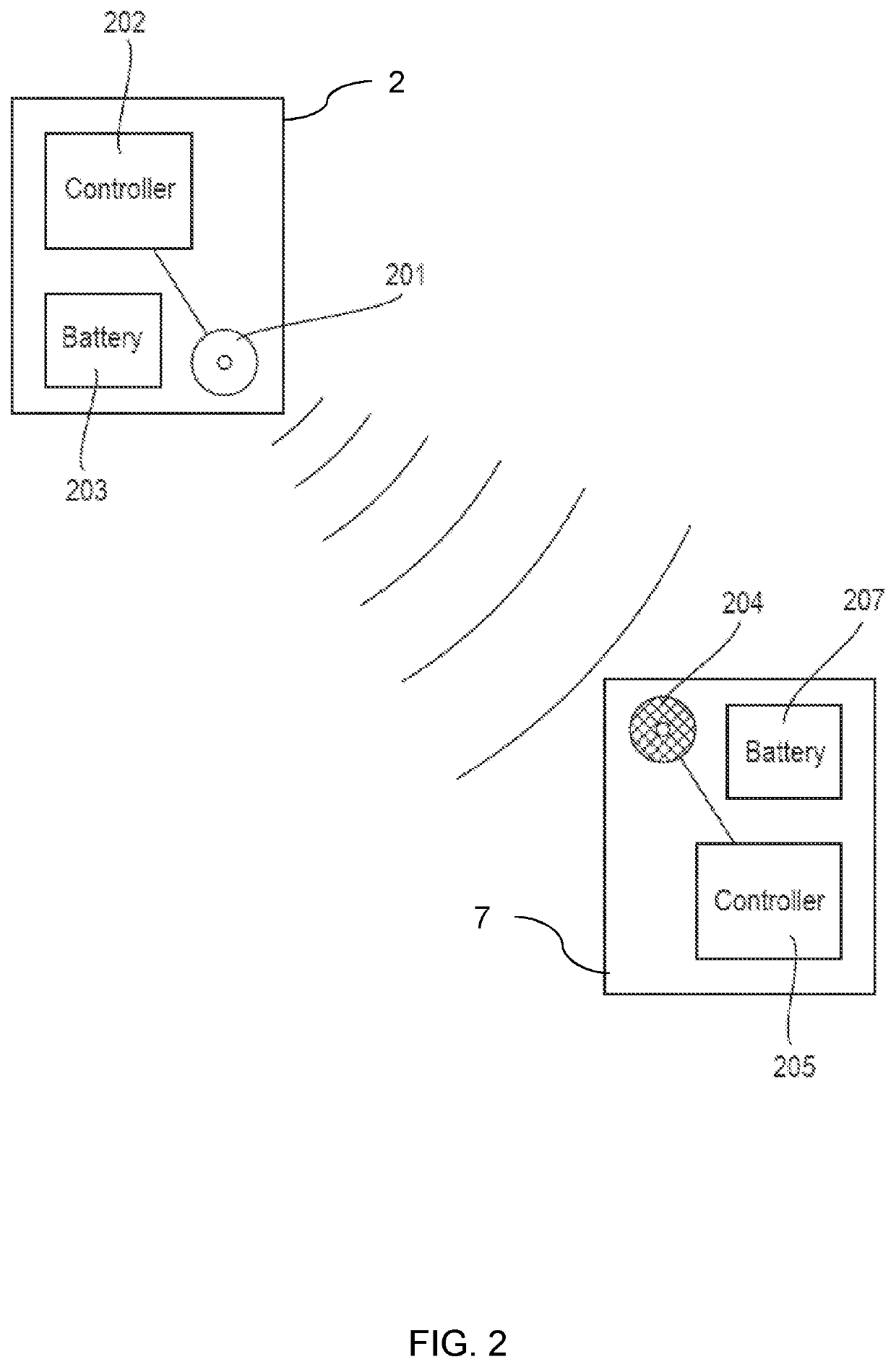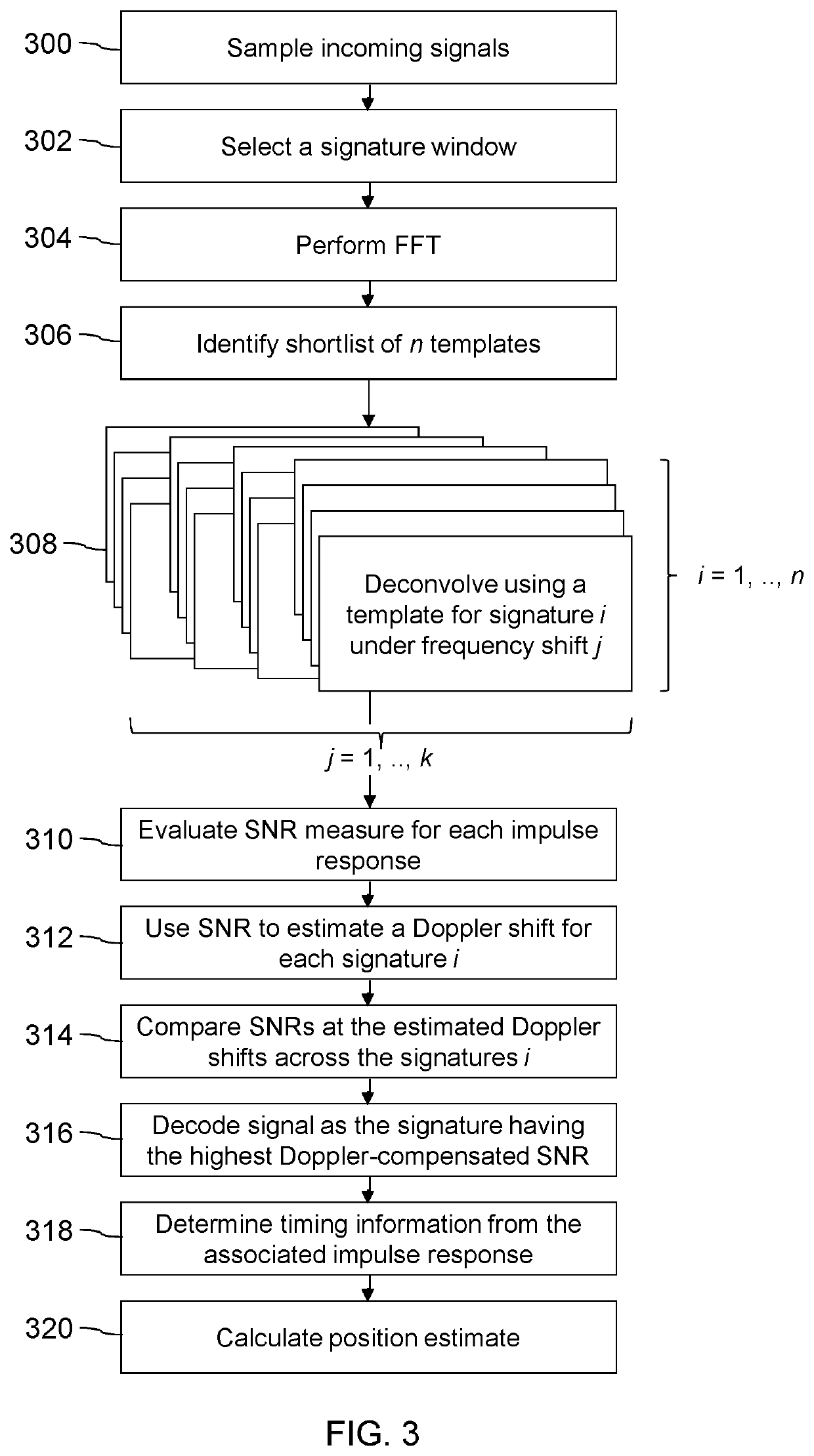Frequency-shift determination
a technology of frequency shift and determination, applied in the field of frequency shift determination, can solve the problems of cross-correlation-based decoding, distorted frequency and phase of received signals, and poor performance of cross-correlation-based decoding in such circumstances
- Summary
- Abstract
- Description
- Claims
- Application Information
AI Technical Summary
Benefits of technology
Problems solved by technology
Method used
Image
Examples
Embodiment Construction
[0073]FIG. 1 shows part of a positioning system that may be used in, for example, a shopping mall in order to determine the locations of shoppers within the shopping mall. Of course, this is just one example environment, and the positioning system could also be used in warehouses, hospitals, domestic homes, vehicles, etc.
[0074]FIG. 1 shows a room 1, to the walls of which are affixed four static transmitter units 2, 3, 4, 5. A person 6 in the room is carrying a mobile receiver unit 7. A network cable 8 connects each transmitter unit 2, 3, 4, 5 to a server 9, which is typically located in another room or in another building. These components cooperate to provide a positioning system, capable of estimating the three-dimensional location of the mobile receiver unit 7 within the room 1. In practice, the system may have further similar transmitter units, installed throughout a building or series of rooms, and a plurality of similar mobile receiver units attached to, or incorporated into, ...
PUM
 Login to View More
Login to View More Abstract
Description
Claims
Application Information
 Login to View More
Login to View More - R&D
- Intellectual Property
- Life Sciences
- Materials
- Tech Scout
- Unparalleled Data Quality
- Higher Quality Content
- 60% Fewer Hallucinations
Browse by: Latest US Patents, China's latest patents, Technical Efficacy Thesaurus, Application Domain, Technology Topic, Popular Technical Reports.
© 2025 PatSnap. All rights reserved.Legal|Privacy policy|Modern Slavery Act Transparency Statement|Sitemap|About US| Contact US: help@patsnap.com



